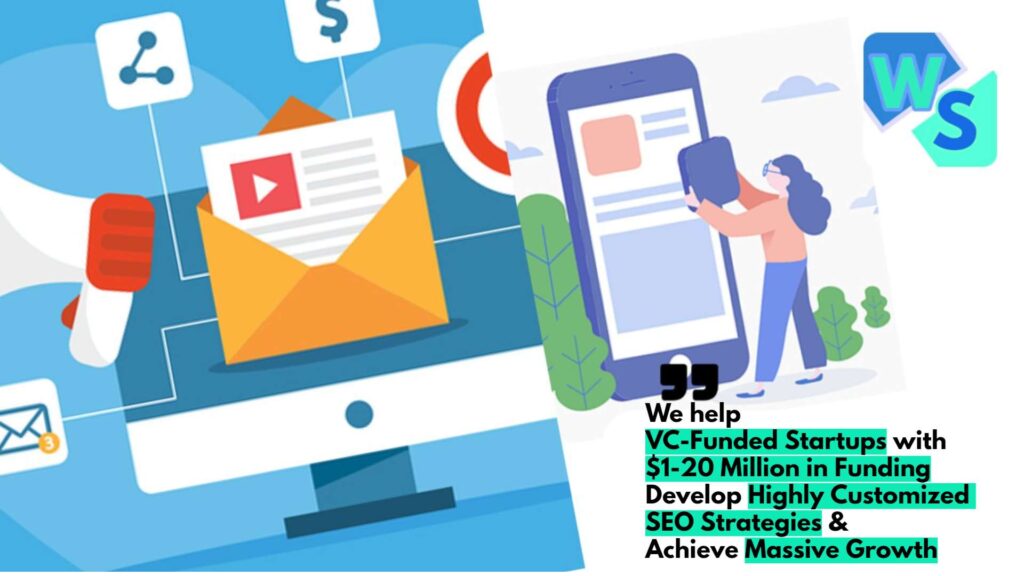Effective Marketing Strategies
In today’s competitive landscape, effectively promoting your goods and services is essential for business success. Two strategies that stand out are creating high-quality content and leveraging influencers.
Creating High-Quality Content
High-quality content is a cornerstone of successful marketing strategies. According to Clodagh O’Brien, consistently creating engaging content and distributing it through various digital channels increases brand visibility and engagement (Digital Marketing Institute). Here are some key elements to consider:
| Element | Description |
|---|---|
| Relevance | Content should align with your target audience’s interests and needs. |
| Value | Provide useful information, solutions, or entertainment to your audience. |
| Consistency | Publish content regularly to keep your audience engaged and informed. |
| Quality | Ensure high standards in writing, visuals, and overall presentation. |
Incorporating high-quality content into your marketing strategy for goods and services can significantly enhance your brand presence. This type of content not only draws potential customers in but also fosters loyalty among existing customers.
Leveraging Influencers
Influencer marketing is an increasingly valuable strategy for extending your reach and enhancing brand credibility. Partnering with influencers allows you to tap into their established audiences, which can lead to increased brand awareness and trust (Digital Marketing Institute). Here are some tips for effective influencer collaboration:
| Tip | Description |
|---|---|
| Identify Relevant Influencers | Look for influencers whose audience aligns with your target market. |
| Build Authentic Relationships | Develop long-term partnerships for better engagement and authenticity. |
| Provide Creative Freedom | Allow influencers to showcase your products or services in their own style, making it resonate better with their audience. |
| Measure Impact | Monitor metrics such as engagement rates, conversions, and brand sentiment to evaluate the effectiveness of your campaigns. |
By leveraging the power of influencers in your efforts to promote goods and services, you can enhance your brand’s reputation and reach new customer segments effectively. Engaging with both high-quality content and influencer partnerships will help you achieve a comprehensive approach to digital marketing.
Essential Digital Marketing Strategies
In the competitive landscape of marketing goods and services, implementing effective digital marketing strategies is essential for success. Three integral components of this approach are content marketing, social media platforms, and email marketing.
Content Marketing Importance
Content marketing is a vital strategy for promoting goods and services, as it allows you to create and share valuable content that resonates with your target audience. According to expert Clodagh O’Brien from the Digital Marketing Institute, effective content marketing helps establish your brand as an authority in your industry, build trust with your audience, and ultimately drive conversions.
High-quality content can attract potential customers to your website, engage existing ones, and nurture leads throughout the buying process. A well-executed content marketing strategy should focus on incorporating informative blog posts, engaging videos, and shareable infographics that provide value to your audience.
Social Media Platforms
Utilizing social media platforms is crucial for promoting your brand and reaching a broader audience. Platforms such as Instagram, Twitter (formerly known as X), and Facebook serve as powerful tools for engaging your target market (Sprout Social).
Recent findings from The Sprout Social Index™ 2023 reveal that over half (53%) of consumers have increased their social media usage in the past two years. This shift in consumer behavior highlights the importance of leveraging social media for your marketing efforts.
Moreover, engaging with your audience through social media can significantly impact their perception of your brand. In a Q2 2024 Sprout Pulse Survey, 78% of consumers reported that a brand’s social media presence influences their trust more than it did a year ago. This statistic jumps to 88% for Gen Z, indicating that maintaining an active and authentic social media presence is vital for your brand’s reputation.
| Consumer Insights | Percentage |
|---|---|
| Increased social media usage | 53% |
| Impact of social media on brand trust | 78% |
| Impact of social media on trust among Gen Z | 88% |
Email Marketing Significance
Email marketing remains one of the most effective methods for directly communicating with your customers. It allows you to personalize messages, segment your audience, and deliver targeted content that meets their needs. Using email marketing, you can promote new products, share special offers, and provide valuable information that keeps your audience engaged.
Incorporating email marketing into your digital strategy ensures that you maintain a direct line of communication with your customers, fostering loyalty and encouraging repeat business. You can enhance your email campaigns by analyzing performance metrics, including open rates and click-through rates, to refine your approach and optimize engagement.
By harnessing the power of content marketing, social media platforms, and email marketing, you can develop a comprehensive strategy for promoting your goods and services effectively. For further insights on marketing strategies, visit our articles on marketing strategy for goods and services and goods and services in marketing.
Key Components for Success
To effectively promote your goods and services, it’s essential to focus on key components that can enhance your marketing strategies. Two crucial elements are Search Engine Optimization (SEO) and engaging video content.
Search Engine Optimization (SEO)
SEO plays a vital role in getting your products and services noticed online. By utilizing effective SEO techniques, you can improve your website’s visibility on search engines, making it easier for potential customers to find you. Key strategies include:
- Keyword Research: Identify relevant keywords that your audience is searching for. Tools like Google Keyword Planner can help you uncover top-performing keywords.
- On-Page SEO: Incorporate keywords into your website’s content, including headings and meta descriptions, ensuring that it’s user-friendly and informative.
- Quality Content: Create valuable content that addresses customer needs, which can lead to higher engagement and shareability.
Here’s a simple breakdown of the benefits of incorporating SEO into your marketing efforts:
| SEO Benefit | Description |
|---|---|
| Increased Visibility | Improves site ranking on search engines |
| Higher Organic Traffic | Attracts more visitors without paid advertising |
| Better User Experience | Enhances site structure and content quality |
| Brand Credibility | Builds trust with customers through quality content |
For more insights on the role of SEO in your marketing strategy, refer to our resources on marketing strategy for goods and services.
Engaging Video Content
Engaging video content is another crucial component of your marketing strategy. Videos can significantly increase your audience engagement and help convey your brand’s message effectively. Consider the following elements when creating video content:
- Storytelling: Craft a compelling narrative that resonates with your audience’s emotions.
- Quality Production: Invest in high-quality video production to ensure professional-looking content.
- Platform Optimization: Optimize videos for different platforms (e.g., YouTube, Instagram, Facebook) to make the most of your reach.
Here are some key advantages of using video content:
| Video Content Advantage | Description |
|---|---|
| Higher Engagement Rates | Videos are more likely to be shared and liked |
| Improved SEO | Video content can improve SEO when optimized |
| Better Retention | Audiences retain information better through video |
| Versatile Formats | Can be used for tutorials, testimonials, and promos |
By integrating engaging video content into your marketing efforts, you can better connect with your target audience. To further explore effective marketing strategies, check out our article on advertising goods and services.
Utilizing both SEO and video content can set the foundation for successfully promoting your goods and services.
Building a Strong Digital Presence
To successfully market your goods and services, it’s essential to establish a robust digital presence. Two critical elements in achieving this are effective storytelling and engaging with your audience across multiple platforms.
Effective Storytelling
Storytelling is a powerful strategy for connecting with your audience on a deeper emotional level. By crafting compelling narratives, you can evoke emotions, stimulate responses, and foster a sense of authenticity and trust in your brand. This approach not only enhances customer engagement but also makes your marketing efforts more impactful (Growth Natives).
When telling your brand’s story, consider the following strategies:
- Focus on Authenticity: Be upfront and truthful in your narratives. This transparency helps to build trust and credibility among your audience.
- Create Relatable Content: Share experiences or scenarios that resonate with your audience’s lives, making the content more engaging.
- Emphasize Value: Showcase how your goods and services provide genuine benefits to your customers. Relevant storytelling drives home the value proposition of what you offer.
| Key Elements of Effective Storytelling | Advantages |
|---|---|
| Authenticity | Builds trust and credibility |
| Relatability | Increases emotional connection |
| Value Proposition | Clarifies benefits to customers |
Engagement on Multiple Platforms
Engaging with your audience across various platforms is fundamental for promoting goods and services. This practice allows for diverse touchpoints, ensuring that you reach customers where they are most active. Utilizing multiple channels enhances your chances of interaction and increases overall exposure.
To effectively engage your audience, consider these approaches:
- Encouraging User-Generated Content: Invite your customers to share their experiences with your products. This not only fosters community engagement but also provides you with authentic testimonials.
- Social Media Interactions: Use social media platforms to interact with your audience in real time, answer questions, and share relevant updates. This type of engagement helps build relationships and brand loyalty.
- Leveraging Content Marketing: Create and distribute valuable content that addresses the needs and concerns of your audience. This positions your brand as a trusted resource in your industry (Digital Marketing Institute).
| Engagement Strategies | Benefits |
|---|---|
| User-Generated Content | Builds community and brand trust |
| Social Media Interaction | Increases interaction and loyalty |
| Content Marketing | Establishes authority and relevance |
By combining effective storytelling with active engagement across multiple platforms, you can significantly enhance your digital presence. This approach not only promotes your goods and services but also cultivates a loyal customer base. For more insights on promoting your offerings, explore our resources on advertising goods and services and online marketing for goods and services.
Harnessing the Power of Social Media
Social Media Platforms Overview
When promoting goods and services, social media platforms are vital. They provide an opportunity to engage directly with your audience and showcase your brand’s personality. Popular platforms include Instagram, Facebook, Twitter (formerly known as X), and TikTok, each catering to different demographics and engagement styles. Using these platforms effectively allows you to capitalize on their vast user bases.
| Platform | User Demographic | Engagement Type |
|---|---|---|
| Primarily 18-34 | Visual content, Stories | |
| All ages | Community building, news-sharing | |
| 18-29 | Short updates, real-time conversations | |
| TikTok | 16-24 | Short videos, viral trends |
Social media marketing not only boosts brand visibility but also encourages interaction with your audience, fostering a sense of community around your goods and services. For detailed insights on using social media effectively, explore our section on advertising goods and services.
Impact of Social Media Presence
A robust social media presence can significantly influence your marketing outcomes. Recent studies show that social media is considered the top channel for product discovery, with 81% of consumers using it to shop around for their next purchase (Sprout Social). This statistic demonstrates that when consumers are exploring their options, your brand’s active presence can capture their attention and drive conversions.
In addition, social media marketing facilitates increased sales alongside brand promotion. It is a cost-effective strategy accessible for businesses of all sizes, as it enables you to reach a larger audience without the need for a significant budget (Mailchimp).
The key to leveraging social media lies in creating engaging content that resonates with your target market. Understanding consumer preferences and market trends can help craft messages that align with your audience’s needs. For a deeper understanding of the role of social media in marketing strategies, visit our articles on online marketing for goods and services and target market for goods and services.
By harnessing these platforms effectively, you can boost your brand’s presence, engage with potential customers, and ultimately drive more sales.
Authenticity in Content Marketing
Importance of Authenticity
Authenticity has emerged as a key element in content marketing. It builds trust, establishes credibility, and ultimately drives long-term success by genuinely connecting with your audience and conveying your brand’s values. Joe Pulizzi, a renowned Content Marketing Specialist, highlights that authentic content reflects the brand’s true values and communicates them honestly and compellingly (Growth Natives).
Incorporating authenticity into your marketing strategies allows you to create meaningful interactions with your audience. By encouraging user-generated content and fostering community engagement, you can create a robust connection that resonates with your target market. The following table outlines the key aspects of authenticity in content marketing.
| Key Aspects | Description |
|---|---|
| Trust Building | Authenticity fosters trust with your audience. |
| Credibility | Being true to your brand’s values enhances credibility. |
| Emotional Connection | Genuine content creates deeper emotional ties with consumers. |
| Differentiation | Authentic messaging sets your brand apart in a competitive landscape. |
Benefits of Being Genuine
Being genuine in your content marketing offers a multitude of benefits. Authentic content can significantly enhance audience engagement, which is vital when promoting goods and services. Engaging storytelling serves as a powerful tool for connecting with your audience on a more emotional level. By telling compelling stories, you evoke emotions and foster authenticity and trust in your brand (Growth Natives).
The table below highlights the benefits of genuine content marketing.
| Benefits | Description |
|---|---|
| Increased Engagement | Authentic content encourages greater audience interaction. |
| Enhanced Brand Loyalty | Genuine messaging fosters loyalty among consumers. |
| Improved Brand Perception | Brands are perceived more positively when they are authentic. |
| Long-Term Success | Trust and connection contributed to ongoing customer relationships. |
By focusing on the importance of authenticity and leveraging its benefits, you can effectively enhance your marketing strategy. This approach will allow you to promote your goods and services while establishing a loyal customer base. Remember, being upfront, truthful, and adding value to your audience is crucial for building deeper connections and distinguishing your brand in the market. For more insights on strategies, explore our articles about marketing strategy for goods and services and advertising goods and services.
Successful Social Media Marketing
In the current digital landscape, having a strong social media presence is critical for promoting goods and services. These platforms offer unique opportunities to connect with your audience, drive sales, and enhance brand loyalty.
Social Media Strategy Essentials
To effectively leverage social media for your marketing efforts, you must establish a well-structured strategy. This approach begins with understanding your target audience and selecting the appropriate channels to reach them. Consider the following essentials when developing your social media strategy:
| Essential Element | Description |
|---|---|
| Target Audience Research | Identify who your customers are, including demographics, interests, and behaviors. Understanding your audience will guide your content creation and engagement strategies. |
| Content Planning | Develop a content calendar that outlines what, when, and how you will post. Incorporate a mix of promotional and engaging content to keep your audience interested. |
| Platform Selection | Choose the right social media channels based on where your target audience is most active. Popular platforms include Facebook, Instagram, Twitter, and LinkedIn. |
| Collaboration | Engage with other departments such as Sales and Customer Care to ensure cohesive messaging across all platforms. (Sprout Social) |
Establishing these fundamentals will help streamline your marketing efforts and set the stage for successful audience engagement.
Monitoring Performance Metrics
Tracking your social media performance is vital for understanding the effectiveness of your strategy. Regularly monitoring key performance metrics allows you to make data-informed adjustments to improve your campaigns. Here are important metrics to consider:
| Metric | Description |
|---|---|
| Engagement Rate | Measure the interactions (likes, shares, comments) on your posts to assess audience interest and content relevance. |
| Reach and Impressions | Evaluate how many unique users viewed your content and how often it was displayed. This helps gauge the visibility of your posts. |
| Follower Growth | Track the increase in your followers over time to understand how effective your content is in attracting new audiences. |
| Conversion Rate | Analyze the percentage of users who take a desired action (e.g., click links, make purchases) after engaging with your social media content. |
These metrics provide insights into consumer behavior and the effectiveness of your promotional strategies. In fact, according to a recent survey, 81% of consumers use social media as a primary channel for product discovery (Sprout Social). By focusing on your performance metrics, you can continuously refine your social media marketing efforts to effectively promote your goods and services.
SEO Optimization for Job Posts
Importance of SEO
In the competitive landscape of recruiting, utilizing SEO techniques is crucial to ensure your job postings reach the right audience. Effective search engine optimization not only enhances the visibility of your listings but also positions them at the top of search results, increasing the likelihood of attracting quality applicants. When crafted correctly, optimized job postings can engage your target audience more effectively, leading to a higher volume of applications for available positions. By improving your site’s ranking and matching content to user intent, you can significantly increase the quality and quantity of traffic to your job postings (Hueman RPO).
To measure the effectiveness of your job postings, it’s essential to monitor key performance indicators (KPIs). Common KPIs include tracking views, applications, time-to-fill positions, and retention rates. Monitoring these metrics will provide valuable insights into how well your SEO strategies are performing over time.
Crafting SEO-Optimized Job Posts
Creating SEO-optimized job postings involves several crucial steps. Here are some essential strategies to follow:
Keyword Research: Identify relevant keywords that potential candidates are likely to use when searching for job opportunities. Incorporate these keywords naturally throughout the job description, including the job title, responsibilities, and qualifications.
Clear Job Titles: Use straightforward and descriptive job titles. Job seekers often filter their searches by title, so ensure it reflects the position accurately.
Engaging Job Descriptions: Write detailed descriptions that outline responsibilities, qualifications, and the benefits of working for your company. An engaging overview can also pique interest from top talents.
Formatting for Readability: Use bullet points and subheadings to enhance readability. Organized content is more likely to retain readers’ attention and rank better in search engines.
Regular Updates: Refresh your job postings every 30 days. Search engines prefer fresh content, so updating postings can improve your search rankings and keep candidates informed of any changes to the role (Hueman RPO).
Utilize Metrics: Keep an eye on the performance metrics of your job postings. Analyzing views and applications will help you refine your SEO strategies and tailor future postings for better engagement (Hueman RPO).
By implementing these strategies, you will enhance the effectiveness of your job postings, effectively promoting your open positions and attracting top-tier talent. For additional information on marketing strategies, refer to our article about the marketing strategy for goods and services.





















